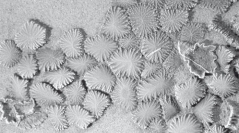

 Geodiversitas
35 (3) - Pages 529-543
Geodiversitas
35 (3) - Pages 529-543Polymerolepis whitei Karatajūtė-Talimaa, 1968 was described based on isolated polyodontode scales recovered from the Ukraine, and originally was thought to be heterostracan (Agnatha). Additional scales with neck canals were described years later, and as a result, P. whitei was reclassified as a bradyodont holocephalan because it had scales similar to those of Listracanthus Newberry & Worthen, 1870. Until now, no articulated body fossils were known, and so the classification of this taxon has remained uncertain and based only on the original author’s opinion. New specimens of P. whitei from the Mackenzie Mountains, Northwest Territories, Canada, show articulated scale patches from the head, with the best specimen showing part of an anal fin, caudal peduncle, and caudal fin. This new material confirms that the original account of scale variation was accurate, but also that P. whitei possesses an anal fin spine, a feature that, until recently, was thought to be a synapomorphy of acanthodian fishes among Palaeozoic fishes. Several primitive chondrichthyans (Obtusacanthus Hanke & Wilson, 2004; Lupopsyroides Hanke & Wilson, 2004; Kathemacanthus Gagnier & Wilson, 1996; Seretolepis Karatajūtė-Talimaa, 1968; Doliodus Traquair, 1893; Antarctilamna Young, 1982, and also problematic taxa such as Gyracanthides Woodward, 1902, and now Polymerolepis Karatajūtė-Talimaa, 1968), are known from articulated remains and show a fin-spine complement like that of acanthodian fishes. They also have placoid scales or polyodontode scales that grew by areal rather than superpositional accretion. These taxa blur the distinction that exists in historic literature between acanthodians and early chondrichthyans.
Lower Devonian, Lochkovian, chondrichthyan, Bradyodonti